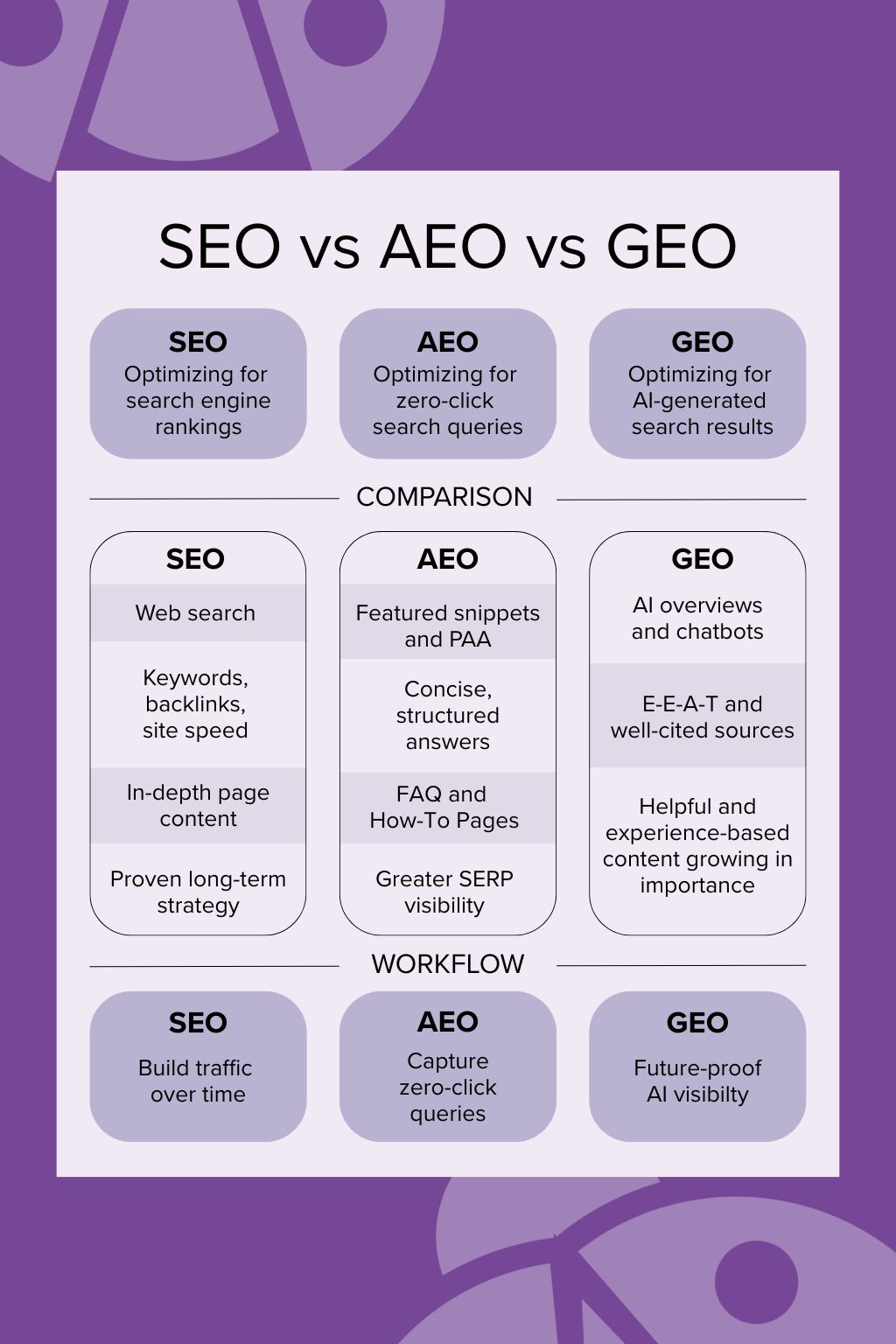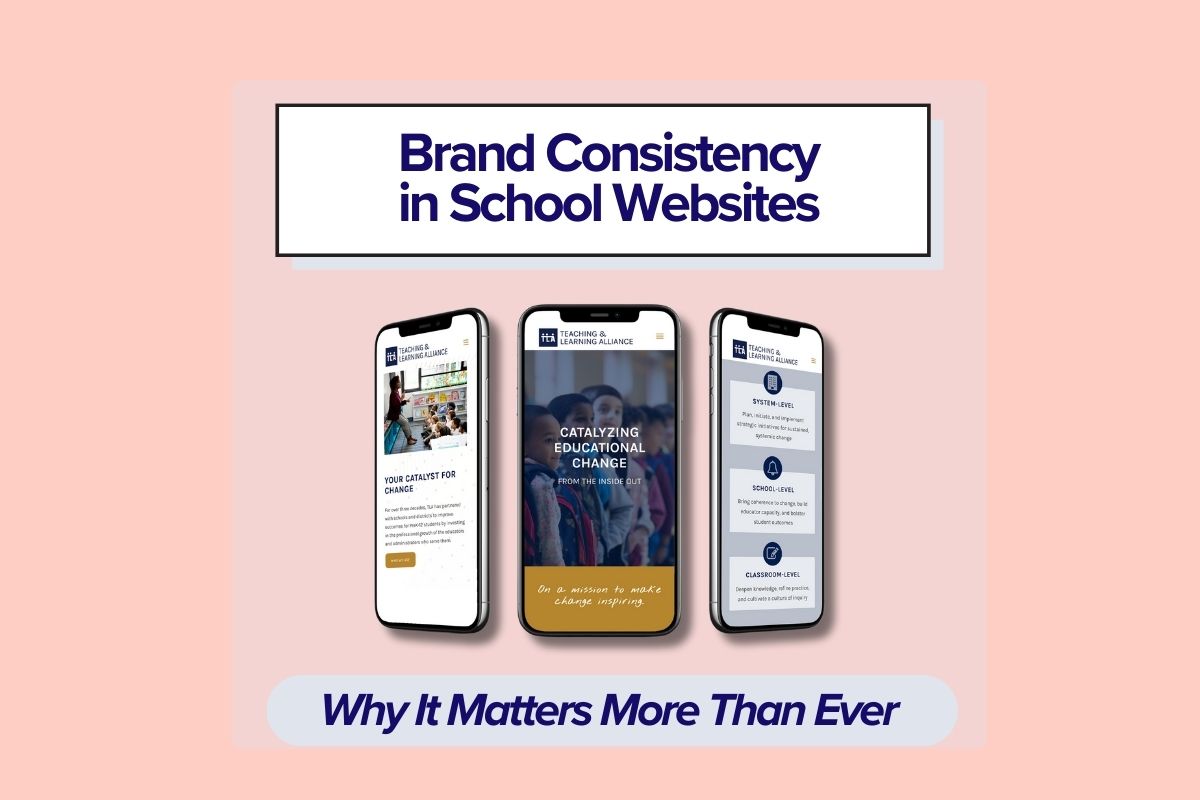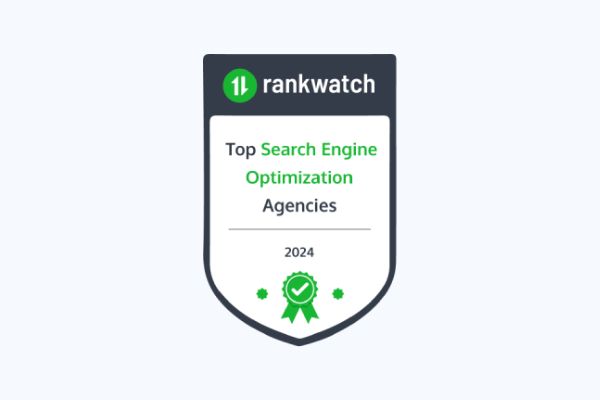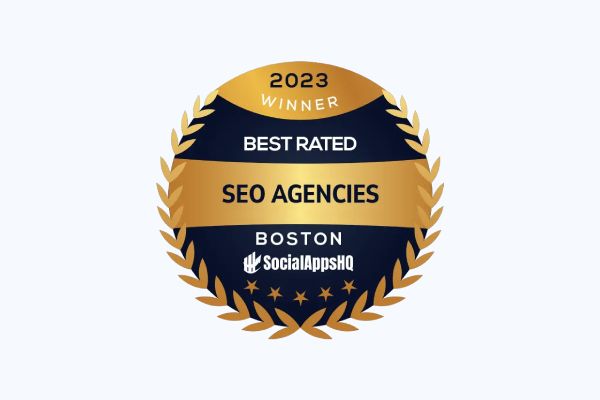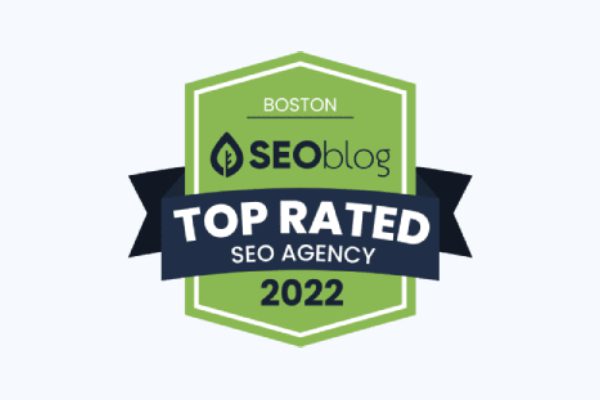What’s the difference between SEO vs AEO vs GEO in digital marketing?
These terms are shorthand for Search Engine Optimization (SEO), Answer Engine Optimization (AEO), and Generative Engine Optimization (GEO).
None of the optimization strategies is better than the other. They each play a different role in getting you seen by the right audience by:
- Helping search engines find you
- Gaining maximum visibility and reach
- Remaining competitive in the world of artificial intelligence (AI)
Read on to better understand why each strategy is valuable and how you can develop your comprehensive search plan.
The Evolution of Search
Most marketers have a baseline understanding of traditional SEO, keywords, backlinks, and page ranking. The evolution of search took a giant leap forward with the rise of AI-driven search engines. We now take for granted the ability to use smartphones and voice assistants to get quick, concise answers. Today, we even have conversations with our devices thanks to generative engines like ChatGPT.
In short, these advancements reflect a shift from optimizing for algorithms to a more sophisticated approach: Optimizing for context, intent, and conversational engagement across multiple intelligent platforms. Traditional SEO and AI-search optimization should both have a place in your 2026 digital marketing strategies.
It’s time to clarify how to use SEO vs AEO vs GEO for the most effective strategy.
Search Engine Optimization (SEO) to Increase Page Rank
In 2026, traditional Search Engine Optimization is still the backbone of digital marketing, as it has been for decades. Traditional SEO is a proven method for increasing brand exposure and directing users to your website.
So, what exactly is SEO?
What is the Definition of SEO?
Search Engine Optimization in 2026 focuses on increasing a website’s visibility in online search engines such as Google, Bing, and Yahoo. Here, we’ll just refer to Google, which has 90% of the search engine market. Google’s primary goal is to drive organic traffic (not from paid ads) to a website. The prize is the #1 spot on the first Search Engine Results Page (SERP) and an increase in click-through rate (CTR).
Why is it so essential to get a top-ranked position on the SERP? The facts speak for themselves:
- Over 99% of users never go past the first results page.
- The first listing on page one has a 40% CTR, which plummets as you decrease in rankings. For example, the second listing on page one is just 7%.
- Moving up a single position in Google increases relative CTR by more than 32%..
So, how do you climb to the top of page one?
So, How Does Search Engine Optimization Work in 2026?
When you think of SEO, the first word that comes to mind is keywords, a word (or phrase) that best describes the content on a specific page or post. Marketers carefully select keywords to bring their listing to the top position when users type in their query. SEO optimization enables search engines to crawl, index, and rank web pages using a complex, ever-evolving algorithm.
Many people think that keywords are the only essential elements of SEO, but there are many other critical factors:
Content Optimization:
Developing high-quality, relevant content that strategically incorporates keywords, aligns with user search intent, and is structured for readability and accessibility.
On-Page SEO:
Optimizing webpage content and structure with items like title tags, headings, meta descriptions, internal links, and image alt texts.
Off-Page SEO (Technical SEO):
Focusing on a website’s underlying structure and infrastructure. This ensures that search engines can crawl, render, index, and serve content correctly. Components include backlinks, site speed, load times, mobile-friendliness, structured data, and security.
What are the Pros & Cons of SEO?
With the upsurge of AI, many digital marketers have warned that the value of traditional SEO has eroded. That is true to some extent. However, as the following pros and cons demonstrate, SEO remains beneficial for search.
Pros of SEO
- Sustained long-term organic traffic
- Higher search rankings for greater brand authority, trust, and credibility among users and search algorithms
- Trackable ROI, with tools that provide clear metrics and insight into current performance and ways to improve
- Supporting broader digital marketing strategies like content creation and PPC (pay-per-click) campaigns
Cons of SEO
- Not being able to capture visibility in zero-click searches, voice queries, or AI-driven responses
- Demands continuous effort to adapt to algorithm updates
- Requires significant time and monetary investment, without guaranteed results
- Potential penalties – such as lower rankings- for incorrect practices, such as keyword stuffing
Use Cases for SEO:
SEO Use Case 1—Local Retailer:
A small toy retailer in Boston wants to increase sales of educational toys for children aged 3-5 years. Based on their SEO criteria, they chose the keyword Best educational toys for toddlers in Boston. The relevant product page is optimized for this search term, leveraging on-page and off-page SEO.
SEO Use Case 2—Early-Stage Biotech Company:
An early-stage biotech company is seeking investors to fund product development. After conducting keyword research, the company optimizes its Investor page with well-performing keywords, such as “Best biotech company investment” or “How to invest in biotech companies.” The page contains clear information on the company, its technology, investment opportunities, contact information, and a call-to-action.
Answer Engine Optimization (AEO) for SEO Instant Answers
Answer Engine Optimization is a method that provides users with quick and easy access to information. With time at a premium, what could be better than immediate answers right on the first results page? Enter the rise of Answer Engine Optimization (AEO).
What is the 2026 Definition of AEO?
Answer Engine Optimization helps content appear in AI-powered search engines and voice assistants by providing clear, direct answers to queries. Rather than focusing on clicks to your website, AEO prioritizes inclusion in answers directly on the results page. This zero-click solution may be delivered through features like AI Overviews or voice assistant responses. This is known as Position Zero.
Why is AEO increasingly significant?
Position zero is, of course, highly valuable. Consider that the presence of an AI Overview in the search results correlates with a 34.5% lower average CTR for the top-ranking page. Why? People looking for a quick answer may not scroll down to the ranked listings at all. The best of both worlds is to appear in the AI-generated results, plus have the #1 SERP position.
What does this mean?
The increased visibility you gain with AEO optimization makes it ever more vital that AI and machines can easily understand the content and context of websites and pages.
This leads to the question, How does AEO work?
How Does Answer Engine Optimization (AEO) Work?
Today’s marketers are wise to develop and apply Answer Engine Optimization as part of their digital marketing strategy. To better understand how AEO works, let’s start with the key elements and basic tactics of AEO.
Core Components of AEO (Answer Engine Optimization)
Clear question-and-answer formats:
Address shared keyboard and voice queries like What is AEO? or How do I optimize for voice search?
Structured Data (Schema Markup):
Organize information in a clear, pre-defined format for AI comprehension.
Natural Language:
Optimize for voice search SEO using natural-sounding language responses, long-tail keywords, pronouns, and question-based content such as FAQs.
Featured Snippet Optimization:
Featured snippets are highlighted excerpts of text that appear at the top of a SERP, also known as Position 0. Snippet optimization techniques include using clear headings, bullet points, and concise answers.
Scannable Content:
Optimize with brief (50-60 words), accurate answers that AI can easily recognize.
Semantic SEO:
Focus content on understanding and aligning with the meaning and intent behind user search queries, rather than just matching keywords.
What are the Pros & Cons of AEO?
Optimizing content for answer engines is becoming an essential component of achieving online visibility. At the same time, there are limitations to employing an AEO strategy.
Pros of AEO
- Captures users seeking instant answers with zero-click visibility
- Gains prominence among the increasing number of people who actively use voice search on mobile and smart devices
- Establishes brand authority and increases CTR
- Enhances user engagement
Cons of AEO
- May not drive direct website traffic due to zero-click results
- Difficulty measuring performance with fewer site visits
- Requires ongoing monitoring of trending queries and AI updates
- Requires a strong understanding of structured data, like schema markup
Use Cases of AEO
Use Case 1—Featured Snippet Capture:
A home services company creates a FAQ page that briefly answers How often should you replace a furnace filter? The response can be one to two sentences, with schema markup. As a result, Google highlights its answer in the featured snippet, boosting brand visibility.
Use Case 2: Voice Search Optimization:
A dentist’s office specializing in pediatric patients creates a FAQ page with questions such as What’s the best age for my child’s first dental visit? Their concise answer is read aloud by Google Assistant or Siri, capturing potential new patients.
Generative Engine Optimization (GEO) for Conversational AI
Successful generative engine optimization makes you the go-to source for generative engines like ChatGPT and Google AI Overviews. How can you use GEO to thrive in the age of AI-powered search engines?
First, what is GEO?
What is the Definition of Generative Engine Optimization (GEO)?
Generative engine optimization enables AI platforms to synthesize information from multiple sources. After gathering this information, the generative engine provides conversational, comprehensive answers to queries.
Rather than focusing on SERP ranking and clicks, GEO’s focus is for your website’s answer to be integrated directly into AI-generated responses. At its most basic level, GEO focuses on aligning your content with the needs of generative AI. The concrete results include being cited and referenced in AI-generated responses.
An example of GEO is none other than ChatGPT, an AI-powered conversational assistant for information and tasks. Another example of GEO is placement in the high-visibility People Also Ask (PAA) box. Like other zero-click optimization outputs, PAA helps users find more information about their topic without performing extra searches. Clicking a PAA displays a short AI-driven answer, plus links to related questions and specific websites to further your search.
How does Generative Engine Optimization Work?
Generative engine optimization prioritizes clarity, trustworthiness, and domain expertise. This is accomplished through the essentials below.
Core Components of GEO include:
Authoritative Content: High-quality, fact-rich content with citations, statistics, and expert insights.
Conversational Structure: Comprehensive answers to complex questions in a natural tone.
Structured Data: Clear headings, bullet points, and metadata for AI parsing and providing context.
EEAT Content Strategy: Inclusion of signals of Experience, Expertise, Authority, and Trustworthiness.
Credibility signals: Author bios, citations, publication dates, and other clear evidence of credibility.
AI Language Models and Machine Learning: Machine readability for effective AI processing.
What are the Pros & Cons of GEO?
While still in its infancy, GEO is at the forefront of how user behavior intersects with innovative AI technologies. AI-driven optimization will continue to evolve with future advancements in Natural Language Models and Machine Learning.
Pros of GEO
- Appears in high-visibility locations that users increasingly rely on for quick, concise answers
- Future-proofs your site by adapting to evolving AI-powered search technologies
- Matches complex user queries by enhancing the contextual relevance AI engines look for
- Enhances your content creation and improves your search engine visibility
Cons of GEO
- These tools may cite a real piece of writing but inaccurately cite the source
- Strategies vary by industry, requiring significant customization
- Traditional SEO metrics, such as clicks, may not apply, necessitating impression-based tracking
- As an emerging field, the best practices are still evolving
Use Cases of GEO
Use Case 1—Law Firm:
A law firm publishes an authoritative blog post on tenant rights in Massachusetts, including trustworthy sources, accurate facts, and the bio of an expert author. When a user asks ChatGPT What are my rights as a tenant in Massachusetts the law firm is cited, improving brand trust.
Use Case 2—Financial Service Firm:
A financial services company publishes a Retirement Planning Strategy page on its website. The page is context-rich, well-structured, written in a conversational tone, and with schema markup. The page is referenced as a source in Google’s AI Overview.
SEO, AEO, and GEO are all forms of optimization, each with its own characteristics. Two factors in Google Algorithms also come into play: EEAT and User Intent. Let’s learn more.
Shared Content and Optimization Strategies: EEAT and Use Intent
A common statement in SEO is that “Content is King.” Two of the more recent factors affecting Content are EEAT (Experience, Expertise, Authoritativeness, Trustworthiness) and User Intent. EEAT is an acronym for Experience, Expertise, Authority, and Trustworthiness. Here are brief definitions:
EEAT: While EEAT is not a direct ranking factor in Google’s algorithm, it is a critical framework that influences how the algorithm identifies high-quality and reliable content. Human reviewers look for this cluster of traits when evaluating the content’s credibility, depth of knowledge, and reliability.
User Intent: Artificial intelligence shifts search from keyword matching to understanding the meaning behind queries. User intent refers to the underlying goal or purpose behind a user’s search query.
Marketers achieve the best results when they understand how to leverage EEAT and User Intent content and optimization strategies. Here’s more about how to improve content using these approaches.
EEAT: Optimize Content for Excellence
In the end, your overall optimization strategy will only succeed if it reflects the EEAT. content strategy. Here are the basics:
Experience: Does the content creator have first-hand, lived experience with the topic?
Expertise: Does the content creator have the knowledge and qualifications to give reliable information on the subject?
Authoritativeness: Do the creator and the website have a reputation as a leader in their field?
Trustworthiness: Is the content reliable, accurate, and trustworthy? This includes the credibility of the creator, the content itself, and the website.
The EEAT framework helps content creators develop content that is meaningful for users and the Google search engine alike.
But the new kid in town is User Intent.
User Intent: Optimize for the User’s Purpose
Enter the rise of AI-driven search and RankBrain, Google’s AI system for machine learning. People can now ask more complex questions, by voice or keyboard, and expect highly relevant, human-like answers.
User Intent queries land in one of three broad categories:
Transactional: When a user is looking to complete an action, such as making a purchase, booking a service, or signing up for a newsletter.
Query Example: Book a same-day dental appointment near me
Informational: When a user seeks knowledge, facts, or explanations
Query Example: What are the latest FDA guidelines for clinical trial reporting?
Conversational: When a user engages in dialogue-based queries, often with AI or voice assistants, to receive context-rich, personalized answers
Query Example: What do you recommend as the best laptop for graphic design?”
While not covered in this article, it’s worth it to explore optimization factors beyond EEAT and User Intent. These include mobile friendliness, accessibility for all users, and clarifying content with structured data.
While understanding the similarities of SEO, AEO, and GEO, we also need to highlight the differences.
SEO vs AEO vs GEO: What are the Differences?
In developing a search optimization strategy, marketers must also consider the distinct differences between SEO, AEO, and GEO. For example, three key areas where the strategy diverge are:
Content Display Differences
SEO: Displays ranked links on search results pages (with the blue clickable SEO title)
AEO: AI-generated answers in featured snippets or answer boxes
GEO: Synthesized responses and references in AI-driven platforms like ChatGPT
Traffic Impact Differences
SEO: Improved SERP rankings and visibility for more click-throughs
AEO: Possible decreased click-throughs in favor of instant, zero-click results
GEO: Limited traffic as AI-generated answers don’t direct users to source sites
Optimization Technique Differences
SEO: Keywords, backlinks, and technical structure
AEO: Highlighting authoritativeness, directness, relevancy, and question-focused content
GEO: Well-structured content that is comprehensive, factual, well-cited, and natural-sounding.
A Side-by-Side Comparison: SEO vs AEO vs GEO
| Element | SEO (Search Engine Optimization) | AEO (Answer Engine Optimization) | GEO (Generative Engine Optimization) |
| Primary Goal/Purpose | Rank web pages higher in search results to drive website traffic. Outputs include blue links in SERP listings. | Featured in AI-driven answer boxes, featured snippets, and voice search | Be referenced and accurately represented in AI-generated summaries and conversational answers. |
| By Target Platform | Google and other traditional search engines | Voice assistants, featured snippets, knowledge panels | AI-driven generative engines |
| User Intent Focus | Transactional, informational, or conversational answers | Clear, concise responses to questions without further clicks | Long-form, contextual, and conversational queries. |
| User Behavior | Browsing SERPs to visit websites | Seeking instant answers via voice or snippets | Interacting with AI chatbots for synthesized answers |
| Content Style/Structure | Keyword-rich, long-form leveraging elements like headings, backlinks, and technical optimization | Concise, authoritative, question-focused answers, leveraging schema markup | \Comprehensive, fact-rich text that uses natural language patterns, includes citations, and uses structured data |
| Examples of Tactics | On-page and off-page, optimization | Structured data, semantic optimization, and Q&A formatting | Conversational language, accurate sources, and contextual link building |
| Main Platforms | Google, Bing, Yahoo | Alexa, Siri, Google Assistant, Bing | AI chatbots, Google SGE, ChatGPT, Copilot, etc. |
| Measurements of Success | SERP rankings, organic traffic, CTR, bounce rate, session duration, etc. | Featured snippet placements, voice search visibility, direct answer impressions, zero-click impressions | AI citation and reference frequency, brand visibility |
| Future Relevance | Still critical, but shifting focus as AI search grows | Growing importance with rise of voice and mobile searches | Emerging and increasingly vital as users turn to AI-driven engines for answers. |
| Best for | E-commerce, local businesses, service providers | Mobile users, voice search users, and informational queries | Tech-savvy audiences, AI-driven industries, future-focused brands |
How can you get the best results with SEO vs AEO vs GEO? The only answer is that no single strategy can accomplish all search objectives. Each serves a purpose.
This brings us to the hybrid optimization strategy, which integrates all three for the most significant reach and visibility. So let’s get to it!
Hybrid Optimization Strategy to Maximize Visibility and Reach
A hybrid optimization strategy combines two or more optimization techniques to create a more effective solution than any single method could achieve alone. This approach leverages the strengths of each technique to overcome the limitations of others.
How Does a Hybrid Optimization Strategy Work?
A 2026 hybrid optimization strategy that combines SEO, AEO, and GEO maximizes visibility and reach across all search channels, including SERP listings, featured snippets, voice search, and more. All facets of optimization should align with how users consume information online. This creates a unified framework that captures traffic, builds trust, and features your brand wherever customers seek information
Another way to look at combining SEO, AEO, and GEO is that holistic coverage serves multiple purposes using multiple query methods:
SEO: Drives traffic through ranking and ongoing information discovery for users who browse SERP results
AEO: Captures zero-click searches to provide instant answers when using intelligent assistants and voice search
GEO: Secures AI citations for users who prefer conversational queries
In short, a blended strategy prepares you for the future of digital marketing. It provides a competitive advantage by adapting to evolving algorithms, platforms, user intent, user behaviors, and advanced technologies.
Now it’s time to implement this unified strategy.
Workflow for Implementing a Unified Search Strategy
Creating a successful strategy for traditional SEO required an organized approach based on many factors. The addition of AEO and GEO multiplies the complexity. What’s the best way to approach this challenge? A systematic workflow is the most effective way to ensure efficiency, effectiveness, and continuous improvement.
Stage 1: Research & Planning
Map Your Audience & User Intent
- Identify user journeys: transactional, informational, conversational
- Search Segment: Search-driven users (SEO), question-based users (AEO), and dialogue-driven users (GEO)
Perform Keyword + Query Research
- Traditional keywords (SEO)
- Question-based queries (AEO)
- Conversational prompts & long-tail queries (GEO)
Stage 2: Content Creation & Structuring
SEO Focus
- Create long-form, authoritative content optimized for keywords.
- Use strong on-page SEO: titles, H1/H2 tags, meta descriptions, alt text.
- Leverage on-page, off-page, and technical optimization techniques.
AEO Focus
- Add FAQs (with answers of 50-60 words), how-to steps, reviews, and concise answer boxes within pages.
- Implement structured data with schema markup.
- Identify common questions using Google’s “People Also Ask” (PAA) feature or AnswerThePublic
- Use natural language.
- Leverage long-tail phrases, such as, What’s the best way to optimize my website in 2026?
GEO Focus
- Write in natural, conversational language.
- Ensure clarity, context, and credibility by incorporating citations, facts, and credible sources./li>
- Optimize for semantic richness so that AI tools can understand and utilize your content.
- Summarize key points conversationally, using bullet points and clear headings.
- Enhance EEAT with expert quotes, statistics, and citations.
- Ensure metadata supports AI attribution.
Stage 3. Technical Optimization
- SEO: Ensure site speed, mobile optimization, crawlability, and internal linking.
- AEO: Add schema markup, featured snippet formatting, and headings that are voice-search friendly
- GEO: Provide clean, structured content with clear sources so AI models can reference it accurately.
Stage 4. Distribution & Engagement
- SEO: Publish content on the site, optimized for organic ranking.
- AEO: Repurpose into FAQs, knowledge base entries, and voice-friendly snippets.
- GEO: Push context-driven content into platforms that AIs train or pull from (blogs, whitepapers, PDFs, LinkedIn, industry forums).
Stage 5. Monitoring & Measurement
- SEO KPIs: Rankings, organic traffic, bounce rate, conversions
- AEO KPIs: Featured snippet wins, voice search visibility, “People Also Ask” appearances
- GEO KPIs: Mentions in generative AI responses, brand accuracy in AI answers, trust/authority indicators (domain mentions, backlinks from authority sources)
Tips:
- Use Google Analytics, SEMrush, or another platform designed to monitor and improve online optimization.
- Analyze SERPs and AI responses to adjust keywords and structure.
- Stay informed on algorithm updates and AI trends.
Stage 6. Iteration & Improvement
- Review content performance across all three channels.
- Refine FAQs and concise answers for AEO if snippets are missed.
- Expand conversational, context-rich content for GEO visibility.
- Update SEO practices as algorithms evolve.
This hybrid workflow will help you rank higher in search engine optimization (SEO), appear in direct answers (AEO), and show up in AI-generated results (GEO). In addition to the workflow outlined above, you can also use the checklist below to ensure you have taken the right steps as you optimize.
SEO, AEO, and GEO: A Checklist for Businesses
Use this step-by-step checklist for optimizing for SEO, AEO, and GEO. The objective? A holistic optimization process that enables you to meet the needs of search engines for success with Google search engines, AI platform, and your user base.
Over time, you’ll develop a system that best meets your organization’s needs. Ready, set, go!
SEO Checklist:
- Feature relevant keywords
- Have a clean site structure
- Feature substantial content
- Use relevant title tags
- Add alt tags
- Optimize for mobile
- Enable fast load times
- Install Google Search Console and Analytics
- Make sure your website and URL are secure
AEO Checklist:
Identify Intent-Driven Questions
- Craft Direct, Concise Answers
- Implement Structured Data, including:
- FAQ schema for question-and-answer content
- How To schema for instructional content
- Article schema for news and blog content
Optimize for Featured Snippets & PAA Boxes
- Format definitive answers in the 40 to 60 word sweet spot.
- Create dedicated sections that mirror common “People Also Ask” questions.
- Use clear HTML structure (H2s, H3s, etc.) to help search engines identify questions and answers
- Include steps, lists, and tables to encourage use in snippets.
Design for Voice Search
- Use natural, conversational language patterns.
- Focus on question words (who, what, when, where, why, how).
- Create content that answers questions clearly and concisely.
- Optimize for local search terms (voice searches are often local).
Improve Content Authority & Trust
- Include original research or data where possible.
- Feature quotes from recognized industry influencers.
- Create Expert Q&A content with specialists in your field.
- Cite trusted sources (which can later become hidden citation sources for AI).
- Ensure content is comprehensive without being bloated.
Ensure Mobile & UX Optimization
- Ensure fast loading times on all devices
- Create responsive designs that work across all screen sizes
- Minimize intrusive elements that could distract from the content
- Use clear, readable fonts and adequate contrast
- Organize content with intuitive navigation
Continuously Monitor AEO Performance
- Featured snippet appearances (via real-time visibility tracking)
- CTR from search results
- Performance in AI visibility tools like Profound
- Conversion of snippet viewers to leads (high-intent leads)
- Voice search performance
GEO Checklist
Content Clarity and Structure:
- Natural-sounding, context-rich language
- Conversational questions such as “What are the benefits of generative engine optimization?
- Clear, descriptive title, introduction, subheads (H2, H3)
- Bullet points and numbered lists
- Short paragraphs (2–4 sentences max)
- Defined sections, such as What, Why, How, and Examples
- Answers to key questions users are likely to ask
- Examples, use cases, or case studies
- Links to supporting credible sources
Demonstrate Topical Authority:
- Explores the topic in sufficient depth
- Related topics are internally linked
- Demonstrates first-hand knowledge or insight
- Factual, accurate, and up-to-date information
- Linking between related articles
- Citing trustworthy sources
- Using real examples, case studies, or first-hand insights
Technical Enhancements
- Structured data/schema markup
- Descriptive meta titles and meta descriptions
- Author bio showing credibility or expertise
- Alt text for important images or infographics
Use Natural, Context-Rich Language:
- Avoid keyword stuffing. GEO favors semantic clarity over SEO tricks.
- Write the way people ask questions or explain concepts:
- “How does X work?”
- “What are the benefits of Y?”
- “Step-by-step guide to…”
Optimize Metadata and Schema (Where Possible):
- FAQs (schema.org)
- How-To / Guide formatting
- Author bios and content credibility
The Future of Search Optimization: SEO + AEO + GEO
In 2026, succeeding in search isn’t about SEO vs AEO vs GEO. It’s about integrating all three into one cohesive strategy. A multi-faceted search program will capture organic traffic (SEO), zero-click and voice searches (AEO), and visibility in AI-generative responses (GEO).
Position yourself for success in 2026 and beyond by adapting your search strategy to leverage new technologies, user behaviors, and AI-driven opportunities.

